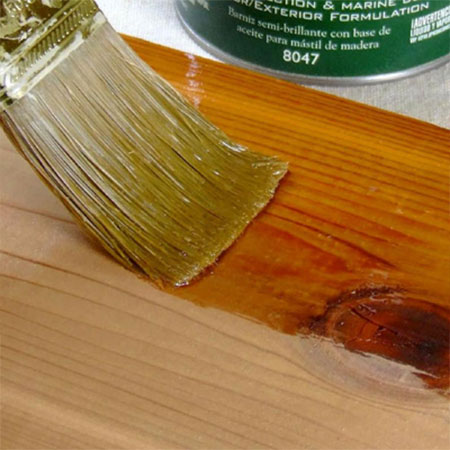What Is The Difference Between Sealer And Varnish?
In days gone by, varnish was the go-to product for enhancing all your timber and wood, but sealer is now the best way to protect your outdoor timber and wood fittings.
09/04/2021
The topic of sealer vs. varnish comes up quite a lot in discussions when you are talking about protecting outdoor wood and timber fixture and fittings and it's mainly because not everyone knows the difference between the two. This might be for good reason when you consider that they are almost the same exact product, but with a subtle, very important difference.
Microscopic view of tree section and visible cells
THE STRUCTURE OF WOOD
Before we can look at why the difference between sealer and varnish is important, we need to look closely at the structure of wood itself. A microscopic view of a tree trunk reveals that trees, like everything else in nature, are made up of a complex structure of cells. It is these cells - and tubes - that carry nutrients essential for the life of the tree. When a tree is cut down, even though it is cut off from its life source, the cells shrink due to lack of moisture. But add a rain shower and those same cells will once again fill up with water and shrink when the water is gone. This process is commonly known as expansion (when the cells fill up) and contraction (when the cells are empty).
Even when cut into timber sections that are on sale at your local Builders or timber merchant, these cells constantly expand and contract in accordance with their ambient environment, whether that is a garden fence that surrounds your property or a beautiful solid wood dining table.
Now that we know a little about the structure of wood and that the cells expand and contract, we can look at why the difference between sealer and varnish is important.
SEALER OR VARNISH?
In the past few years, there have been dramatic breakthroughs in paint technology. We are now seeing paints that combine primer and paint, paints that are 3-in-1 or 5-in-one and paints that are so easy to use, such as chalk paints. The same applies to sealers and varnishes.
Water-based technology is the new eco-friendly alternative to solvent-based paint products and more manufacturers are branding their products as either water-based, water-borne or solvent-based. Whatever the base for the product, water or solvent, these are purely carriers for the main ingredient. The carriers allow you to paint on the product and for this to be absorbed into the wood - offering protection from the elements. While it used to be that sealer is better because it is easier to apply to wood and be absorbed, there are now many exterior varnishes that are just as easy to apply.
Having said that, it is also using the proper method of application that extends the life of a product, one that is absorbed into the cells of the wood to make it plump and naturally beautiful. A product should require at least 3 coats to be applied for the following reasons:
- The first coat is absorbed into the cells of the wood and brings out the natural beauty by plumping up the cells.
- The second coat is applied after sanding away most of the first coat, to ensure maximum absorption.
- The final coat seals the surface of the wood and helps keep the wood cells plump and nourished.
When you want exterior protection to be absorbed into the wood and offer maximum protection, the product needs to be of runny consistency and not too thick.
Like many other things in life, sealers or exterior varnish are not created equally and there are more than a few products on the market that don't quite meet up with the requirements for high standards.
I suppose the 'proof is in the pudding' as they say. Reputable brands can't afford to have a bad rep for their product range and tend to stick to their promises, which is why you should always check on the reputation of a product before you buy it.
WHAT TO LOOK OUT FOR
Whether it's a sealer or varnish, either product will not last for more than a year before it needs to be re-applied. Remember above how we discussed the expansion and contraction process of wood? That expansion and contraction process is ongoing and a sealer or varnish isn't flexible enough.
- When choosing a product for your exterior timber or wood, you want one that:
- Offers UV protection
- Protects against harsh coastal winds (if you live by the coast)
- Is 100% waterproof
- Protects for at least 12 months after application
- Is non-toxic when dry




